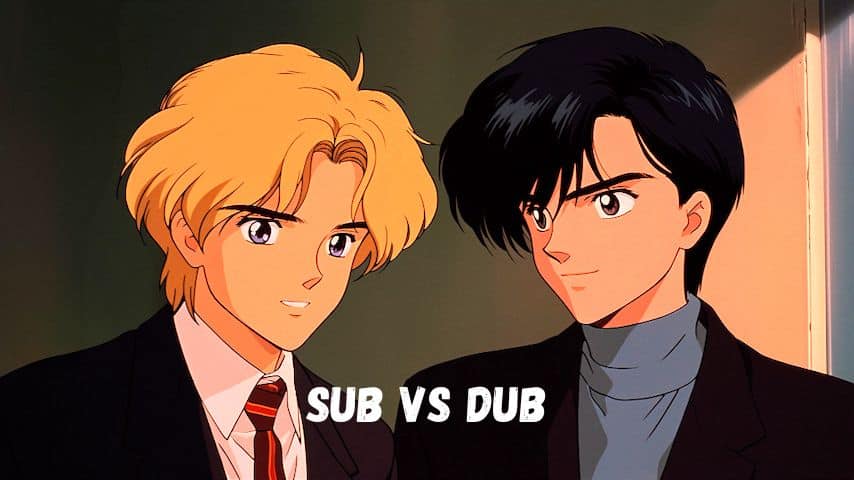When it comes to translating audiovisual content for international audiences, the options can sometimes feel overwhelming. Should you go with dubbing or voice over? These two methods are often confused, but they’re actually quite different. Understanding these differences can significantly impact how well your content is received by its target audience.
In this article, we’ll take a deep dive into dubbing vs voice over, examining what each one involves and when it’s best to use them. By the end, you’ll have a clearer idea of which option is the right fit for your project. Let’s jump in.
Table of Contents
ToggleWhat is Dubbing and Voice Over?
Before we dig into the details, it’s important to get the basics right. Both dubbing and voice over have the same ultimate goal: making content understandable to new audiences, usually in another language. However, the way they achieve this goal is where they diverge.
What is Dubbing?
Dubbing is the process of replacing the original spoken dialogue in a video or film with a new voice track in another language. It’s not as simple as just swapping voices; the new dialogue needs to match the lip movements of the on-screen actors as closely as possible. This is where dubbing can become an art form — syncing voice with visuals so that the audience forgets the content was ever in a different language.
Dubbing is particularly effective for projects where viewer immersion is important. Take, for example, watching a French drama that’s been dubbed into English. Ideally, the lip movements and emotions should match so perfectly that the audience forgets the actors are actually speaking French. This is why dubbing is so widely used in movies, TV shows, and animated features where storytelling and character interaction are central.
The process of dubbing requires skilled voice actors, sound engineers, and editors to ensure the final product is seamless. That attention to detail is what makes dubbing feel natural, keeping viewers engaged without distractions.
What is Voice Over?
Voice over, on the other hand, takes a much simpler approach. Rather than replacing the original dialogue, voice over involves overlaying a new voice track on top of the existing audio. You’ll still hear the original dialogue in the background, but a narrator or translator provides a translation or commentary over it.
Voice over is frequently used in documentaries, news reports, and eLearning videos. It’s ideal when the focus is on the information being conveyed, rather than on the actors’ performances. There’s no need for perfect lip sync since the voice over serves as an informative guide, often clarifying complex visuals or ideas. As a result, it’s quicker to produce and more cost-effective compared to dubbing.
Read More: Voice Over Rates Guide: Everything you need to know
If you’re producing a documentary on climate change or an instructional video for an international audience, voice over would be the natural choice. It gets the message across without the need for intricate audio-visual matching.
Differences Between Voice Over and Dubbing?
Now that we’ve established what dubbing and voice over are, it’s time to look at how they differ. This distinction mainly boils down to the amount of modification required for the original audio and how the new voice fits in with the visuals.
The Importance of Lip Sync
Lip-syncing is arguably the most significant difference between dubbing and voice over. Dubbing relies heavily on precise lip-sync to create a seamless experience. When done right, the audience won’t even realise that the characters are speaking a different language. This is particularly important for dramatic or emotionally charged content, where the performance relies heavily on the actors’ delivery of their lines.
With voice over, there’s no need to worry about lip-sync at all. The original dialogue remains in the background, and the voice over simply overlays the existing audio. This makes it an ideal solution for content where the visual aspect is more about providing context or information rather than showcasing an actor’s performance. It also allows the narrator to provide additional information that might not be present in the original dialogue, adding another layer of context or explanation.
Because voice over doesn’t require the same level of detail in matching audio to visuals, it’s generally quicker and easier to produce, making it a great option for projects where speed is essential.
Embark on Epic Voice Overs
Understand the nuances of dubbing vs voice-over with insights from GoLocalise.
What is the Best Option for My Project?
Choosing between dubbing and voice over ultimately depends on the nature of your project. Each method has its own strengths, so the right choice comes down to factors like the type of content, your audience, and your budget. Let’s explore where each option makes the most sense.
Common Uses for Voice Over and Advantages
Voice over tends to be the go-to solution when the content’s primary purpose is to inform or educate, rather than entertain. Here are some situations where voice over is a natural fit:
- Documentaries: Whether it’s a nature documentary or a historical piece, voice over helps provide explanations and context for what’s happening on screen. The narrator guides viewers through the content, making sure they understand the visuals without needing to read subtitles or lose track of important information.
- Instructional and eLearning videos: In educational videos, voice over plays a key role in delivering step-by-step instructions or explaining complex concepts. It’s especially useful for eLearning content that needs to be translated into multiple languages, as it’s quicker and cheaper than dubbing.
- Corporate presentations: Voice over is an excellent choice for translating business presentations or marketing videos. It allows companies to reach international clients and colleagues without overhauling the entire production. The narrator can provide a clear and concise translation, keeping the message professional and direct.
The major advantage of voice over is its speed and cost-effectiveness. Because it doesn’t require lip-syncing or replacing the original audio, voice over can be completed much more quickly and at a fraction of the cost of dubbing. This makes it an ideal option for projects with tighter deadlines or limited budgets, particularly in corporate, educational, or documentary settings.
Example Voice Over Use
Common Uses for Dubbing and Advantages
Dubbing, on the other hand, excels in content where emotional depth and immersion are crucial. Here are some common scenarios where dubbing is the best choice:
- Films and TV shows: When it comes to narrative-driven content like dramas, comedies, or thrillers, dubbing helps maintain the emotional impact of the performances. By syncing the new audio with the actors’ lip movements, dubbing keeps the audience engaged without distracting them with subtitles or misaligned dialogue.
- Animated series and films: For animated content, whether it’s cartoons or anime, dubbing makes the characters come to life in the viewer’s native language. Since the animated characters don’t have as strict lip movements as live-action actors, dubbing can be applied with ease, creating a seamless experience.
- Video games: Dubbing in video games ensures that players experience an immersive world where the characters speak their language. This is particularly important in story-driven games where character interaction is a big part of the gameplay experience.
- Children’s content: Children’s programming often uses dubbing to make content accessible to young viewers who may not be able to read subtitles yet. Dubbing ensures they can enjoy their favourite shows in their native language without losing any of the fun or story elements.
While dubbing takes more time and is generally more expensive due to the complexity of syncing the voice with on-screen actors, the result is a highly immersive and engaging experience. It’s the best choice when maintaining the performance’s integrity is a top priority.
Which is More Cost-Effective: Dubbing vs Voice Over?
When it comes to cost, voice over is almost always the more budget-friendly option. Since you don’t need to worry about syncing the voice to the lip movements or replacing the entire audio track, voice over is faster and less labour-intensive. This makes it an ideal choice for content where the primary focus is on delivering information, such as educational videos, training materials, or corporate presentations.
On the other hand, dubbing requires more time, effort, and resources. It involves matching the new audio with the visuals, which means working with skilled voice actors, sound engineers, and editors to ensure that the final product feels natural. While dubbing is more expensive, the investment is often worth it for narrative-driven content like films and TV shows, where viewer immersion is key.
Can I use both dubbing and voice over in the same project?
Yes, it’s possible to use both voice over and dubbing in the same project, depending on your specific needs. For instance, you might use voice over for narration and dubbing for the characters’ dialogue in a film. However, this can increase production complexity and costs.
Final Thoughts
In the end, choosing between dubbing and voice over depends on the nature of your content and your goals for the project. Voice over is the perfect choice for informational content that needs to be translated quickly and efficiently, while dubbing is the better option for media where emotional impact and audience immersion are essential.
At GoLocalise, we understand that both methods have their place, and we’re here to help you make the right choice for your project. Whether you need expert dubbing or professional voice over services, our team has the experience to deliver high-quality localisation that resonates with global audiences.






















